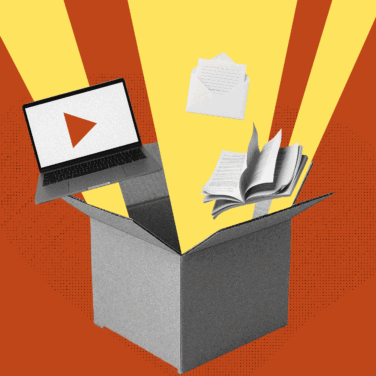Joanna Kmiec has built teams and shifted paradigms in many industries over the course of her career — including the software space. At the time of this interview, she worked at a software company called Elastic Path, though she recently became CPO at Loopio.
Her focus is on Employee Experience, and we caught up with her to understand how she's using AI to enhance EX across organizations. Here's what she told us.
Treat employee experience like a product
Over the course of my career, I’ve led and built teams across industries — from media to biotech — working on a global scale. In recent years, I’ve been embedded in the tech and software space, where the pace is fast, the stakes are high, and the people you bring on board can make or break your competitive edge.
That journey reshaped how I see the Employee Experience. To me, EX isn’t just an HR function — it’s a product. When it’s designed with intention, it becomes a powerful lever for growth, retention, and innovation.
EX isn’t just an HR function — it’s a product. When it’s designed with intention, it becomes a powerful lever for growth, retention, and innovation.
Today, I focus on helping tech companies build strategic, scalable HR roadmaps that drive real business outcomes.
Transforming employee onboarding with AI
Our team started using ChatGPT to elevate our prompting capability — from creating a training program for the People team that called out specific AI use cases and provided well-known platforms to solve for key gaps, to the turning point: the intent to overhaul our onboarding programs.
What once took weeks of work could now be drafted in just 30 minutes.
Take Sales as an example: In a fast-moving sales organization, speed to ramp is critical. But even more than speed, the right approach delivers consistency, personalization, and scalability — without overloading either the People team or Sales.
In the past, building a tailored onboarding program could take weeks of coordination: pulling slide decks from sales enablement, syncing with product teams for the latest features, looping in marketing for messaging updates, and manually assigning tasks in an HRIS.
Now, within minutes, we could:
- Generate a full onboarding curriculum based on the latest sales playbook, segmented by role (e.g., SDRs vs. AEs), product, and region.
- Auto-populate learning modules with the most current pitch decks, case studies, and demo recordings — pulled from internal knowledge bases and sales enablement tools.
- Create role-specific onboarding journeys, with interactive tasks, quizzes, and time-bound goals integrated directly into the team's existing tools.
Realizing we could scale this into tailored, role-specific journeys was a game-changer. The key was ensuring our data was current and ready to be leveraged — the quality of the output depends entirely on the quality of the input.
Scaling AI across Human Resources
We recently overhauled our Feedback Focus Program, utilizing AI insights around sentiment analysis to create an actionable plan.
We hold engagement surveys in order to obtain open feedback around the areas where our employee experience is thriving, and to call out areas of opportunity. We then hold live employee feedback sessions to determine additional context and discuss possible solutions to improve the experience.
While our tools provided some high-level sentiment analysis, we applied AI to dig deeper — especially into focus group feedback — and uncover themes and action items that might otherwise have been missed.
This approach allowed leaders to move past surface insights and participate in real, value-added solutioning. It also changed the way we communicate strategically as a business.
That feedback loop also helped us refine how we structured collaboration across teams. We encourage cross-team collaboration for AI integration by having discussions start at the top, across all departments, and reinforced through shared learning and experimentation.
We even created a dedicated cross-functional AI team with representatives from every major department. Their role: Provide feedback on use cases, recommend appropriate tools, and identify training opportunities across the employee base.
Most importantly, we celebrate the wins — spotlighting where processes were elevated or, in some cases, completely redesigned with the help of AI.
The challenge of AI adoption isn't technical — it's human
The biggest surprise in adopting AI is that the challenge isn’t technical — it’s human.
When adopting AI is that the challenge isn’t technical — it’s human.
I initially thought the hardest part would be integration, training, or choosing the right tools. But what’s surprised me most is how much mindset determines success. People don’t resist AI because it’s too complex; they resist it because it threatens familiarity, identity, and control.
I’ve seen teams hesitate because the introduction of AI triggered silent questions like:
- “What does this mean for my role?”
- “Will my judgment still matter?”
- “How do I know I can trust what this thing tells me?”
That’s why it’s so important to bring people along — letting them test, ask questions, challenge the process, and most importantly, help shape how AI fits into their work.
The key isn’t to replace the human side, but to free up time for strategic, value-added work while ensuring processes still remain “human” in the right places.
AI success depends on behavior change, not tools
On a similar note, success does not depend solely on what AI tools you pick. It's about behavioral changes.
So instead of asking, “What AI tools should we buy?” we ask: "What decisions and workflows are we trying to improve or accelerate, and who needs to be involved in co-designing the process so that it sticks?"
We're focusing on an elevated partnership between HR and IT, and extending those partnerships across all teams. Our goal: identify which workflows must evolve, choose the right tools to support them, and help the organization embrace the change.
Why most companies get AI implementation wrong
One of the biggest disconnects I see is that AI is often seen as a strategic transformation — but implemented like a tactical add-on.
Organizations talk about becoming AI-first, but their operating models, team structures, and mindsets are still stuck in pre-AI workflows. Or, they are only looking to embed AI into their product, forgetting the rest of the organization.
Many are trying to force or layer AI tools on top of existing workflows instead of determining if it should be redesigned instead.
For example, they adopt AI to “speed up” recruiting or onboarding — but never address outdated approval chains, or the fact that employees haven’t been trained to trust or interpret AI-generated outputs. As a result, the tools aren’t fully leveraged.
How to train a team to adapt to AI
To ensure our team was adapting, we leveraged "ChatGPT Team" for prompting practice and supported team members in attending external AI training sessions to get comfortable with various use cases specific to HR.
We also experimented with sentiment analysis, leveraging our existing programs and survey tools to allow for a deeper dive into the feedback and any emerging trends. This helped the team move beyond surface-level insights and find creative, actionable ways to respond.
Leadership is changing in an AI-first world
In this transition, I believe the leaders who don't embrace change will be left behind.
Leadership will evolve to a role of enablement — creating teams and environments where AI, data, and the human side interact seamlessly.
The role of a leader will be less about directing and more about providing context, removing roadblocks, and ensuring alignment.
Tomorrow’s leaders won’t just provide vision — they’ll remove roadblocks, create context, and ensure alignment. They’ll need to understand the employee journey, build with both AI and humans in mind, and lean on strong Emotional Intelligence.
EQ, curiosity, adaptive communication, digital understanding, and the ability to create psychological safety and trust will emerge as key competencies for successful leaders.
Advice for leaders in an AI-first world
In an AI-first world, no one has all the answers. The leaders who thrive will be the ones who can set a clear direction, even while navigating ambiguity, and invite their teams to co-create the path forward.
In an AI-first world, no one has all the answers. The leaders who thrive will be the ones who can set a clear direction, even while navigating ambiguity.
So here's my advice:
- Treat change as a product, not a project. Roll it out iteratively, get feedback, adjust. AI isn’t one-and-done — it’s ongoing.
- Involve people early. Whether it’s frontline managers or back-end developers, include the people who are closest to the work in the transformation process. Adoption starts with ownership. Don't limit adoption to solely product teams — this change needs to occur on an org level.
- Redefine value. Focus on productivity, with your differentiators being creativity, ethical judgment, empathy, and adaptability — the human skills AI can’t easily replicate.
- Be transparent about what’s changing — and what’s not. People need to know that while the tools may evolve, your core values and purpose remain constant. That’s how you build trust through change.
Follow along
You can follow Joanna’s work on LinkedIn as she continues to design and scale people-first leadership in an AI-first world.
More expert interviews to come on People Managing People.





